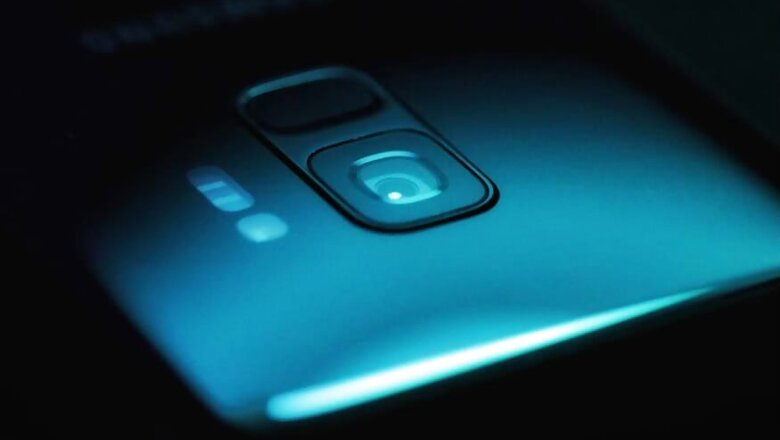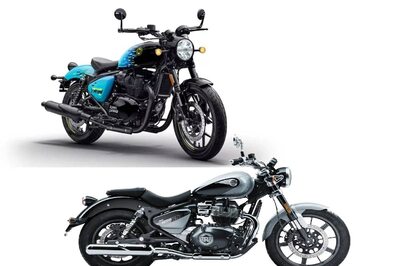
views
A new 'mystery' smartphone is seemingly set to launch next month, the highlight of which is a 192-megapixel rear camera. The information comes from a post made on Chinese platform Weibo by Digital Chat Station, which claims that more details about the smartphone in question will be revealed next month, and the device, of which absolutely nothing is known till date, will come with a 192-megapixel camera and the Qualcomm Snapdragon 765G gaming chipset inside. No further information, such as the maker of the device or any other technical details about the camera are as yet known.
While having a 200-megapixel camera was only reserved for Hasselblad's medium format territory until recently, such a phone camera sensor is not wishful thinking any longer. In early 2019, in a technical briefing session, Judd Heape, a product director at Qualcomm, had stated that the image signal processor on board the Snapdragon 855 processor is powerful enough to process 192-megapixel images. He had further predicted that by end-2019 and early 2020, phones featuring 100-odd megapixel cameras would be reality, which has indeed happened now.
To further substantiate this claim, Samsung is said to have been busy recently in building a 1-inch sensor for phones, with 150-megapixel resolution. It already has a 108-megapixel image sensor, which has featured in the Mi Note 10 by Xiaomi, breaking the 100-megapixel barrier for phone cameras. As a result, it is likely that Samsung may be undertaking the task of building this behemoth sensor. It is also likely that one of China's major smartphone OEMs, such as Oppo, Vivo, Xiaomi or Huawei, would be the chosen partner to launch the world's first near-200 megapixel phone camera.
Does it even make sense?
Since we do not have any technical data about this purported sensor, we can only make an educated guess. The first hurdle in this process is sensor size — the constraints of a smartphone, in a bid to remain ergonomic, means sensors need to be small and compact, which automatically affects camera performance. While a 1-inch sensor would be a significant achievement in a smartphone, it is still significantly constricted in comparison to an APS-C sensor, or a full-frame one.
Then comes the resolution factor. To ensure that a camera works smoothly and the imaging experience is good, the bandwidth of data from an image sensor needs to not be so massive that it chokes the camera buffer memory and overloads the ISP. When Qualcomm announced that its ISP is capable of handling such images, it was a theoretical performance point reference, and does not account for additional sensory data, as well as processing of high dynamic range modes, into account.
In all probability, a 192-megapixel sensor within a 1-inch sensor size (assuming the reports are correct) would create significantly smaller individual pixels, which naturally gives rise to the need for pixel binning in order to account for low light photography, light bleeding in pixels, sensor noise and more. So far, we have already had quad binning (2x2 pixel arrays) and nona binning (3x3 pixel array in the Samsung 108-megapixel sensor). It seems only likely that with a 192-megapixel sensor, the makers would implement 4x4 pixel arrays to create a massive pixel comprising 16 individual pixels.
There are benefits here — for one, this would allow for great colour accuracy through demosaicing, which in turn may create colour accuracy like never seen in phones before. The other advantage is minimising leakage of light, which in turn can create better signal clarity to reduce image noise and capture sharper details as well as more information in low light. In the end, with 4x4 pixel arrays (hexadecima-binning?), the effective file size will still remain 12-megapixels, which is largely accepted as the Goldilocks Zone of image resolution, clarity and portable file size.
Is this overkill?
In every way, certainly. For an overwhelming majority of consumers, almost any smartphone featuring a 48-megapixel quad-binned sensor and multiple lenses is good enough for every situation. By increasing the effective resolution 4x, will there be perceivable difference in quality of smartphone photography?
If you see your photos mostly on your phone screen, then it will most likely make little to absolutely zero difference. Our human eye, on overall glances, is not tuned to make microscopic observations, and with a 192-megapixel sensor at hand, the proverbial devil will only reside in the finest of details. However, the human mind does crave to own the best of technological standards, since it makes us believe that the end result is, in fact, better than before. Technical tests would likely back it up too.
It also gives OEMs a good marketing leverage, and a 200-megapixel camera on a phone certainly sounds tempting. TL;DR? The technology may be great, but for most of us, the average mid-day lunch shot would look just as colourful as it already does.



















Comments
0 comment